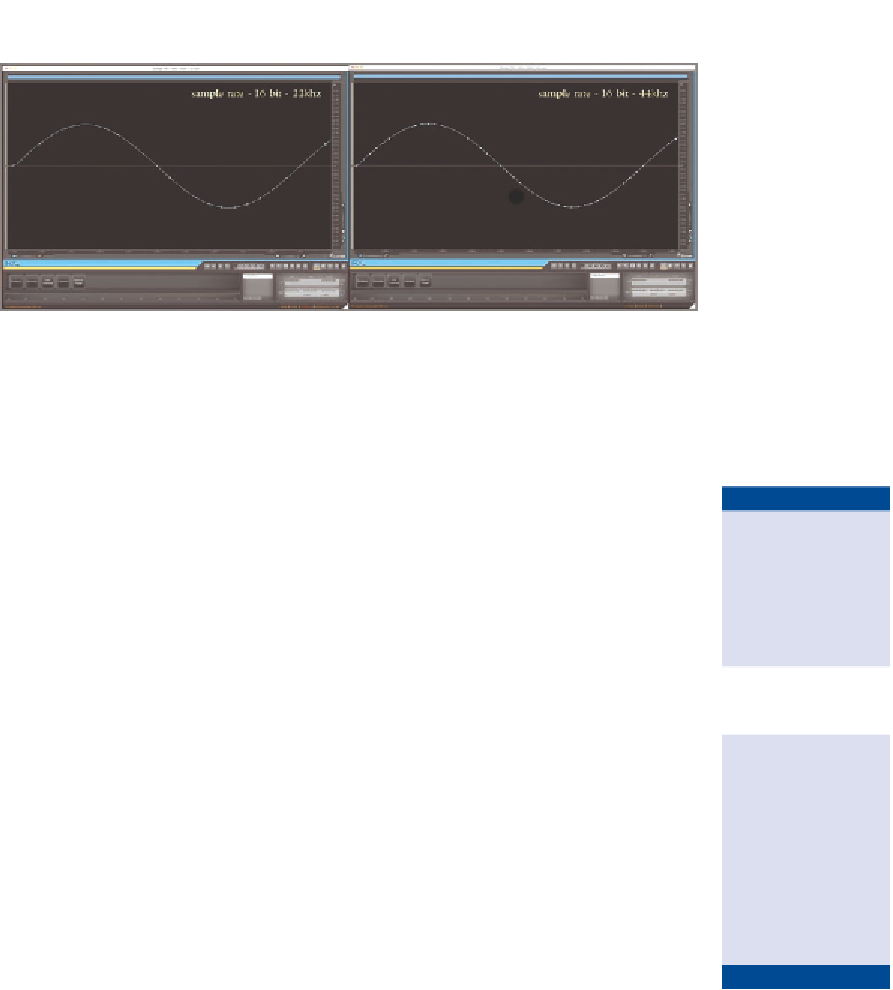Game Development Reference
In-Depth Information
FiGuRe 8.4
The two different images depict the same audio signal captured using two
separate sample rates.
When comparing the two images, you can see the 44 kHz sample rate is sam-
pling the waveform twice as many times as the 22 kHz sample rate in the same
amount of time, allowing for more fidelity of the original signal.
The sample rate is measured in hertz (Hz) or in thousands of hertz (kilohertz:
kHz). The majority of audio for games is recorded at 96 kHz. The chart in
Figure 8.4 shows that the higher the sampling rate, the more nuances become
available in the sampled sound. When you begin to alter the sampling rate,
you're fishing for a unique sound.
The purpose of recording original sound at 96 kHz is to have those sounds at
higher sample rates so they can be manipulated at a higher quality in the edit-
ing/design process. For example, if you slow the speed of a sound, a recording
done with a higher sample rate will yield a much better result due to the fact
that a higher-resolution “snapshot” was taken of the audio. Voice-over/dialogue
is often recorded at 48 kHz. More often than not, SFX (special effects), dialogue,
and music are down-sampled to a combination of different sample rates, usually
48 kHz or lower, to conserve disk space and limit strain on system memory. For
many games, those 48 kHz sounds are compressed using a wide variety of licensed
and proprietary audio codecs.
the majority of audio
for games is recorded
at 96 khz, but gener-
ally it's down-sampled
to 48 khz for the final
format.
the foley process
was first used in film
and television and
has been adapted
for games. Many
companies that pro-
duce foley sounds
do so for all of these
industries.
Foley and Remote Recording
Occasionally, audio designers will go to recording sessions held in a
foley
studio.
This type of studio is a controlled environment, and a huge range of sounds can
be captured—for example, breaking glass, smashing bricks, or stomping feet on
various surfaces such as sand, grass, pavement, gravel, wood, broken china, or
glass. If your game has a character who needs to walk through a post-apocalyptic
world, recording sounds of someone walking over broken bricks and wood and

